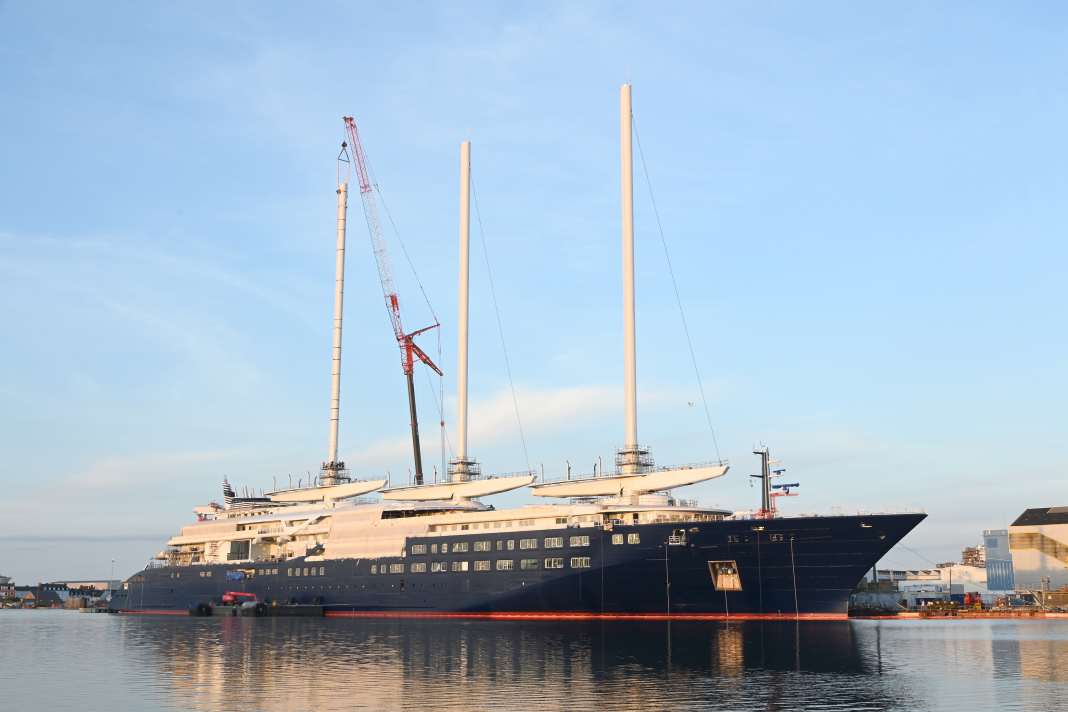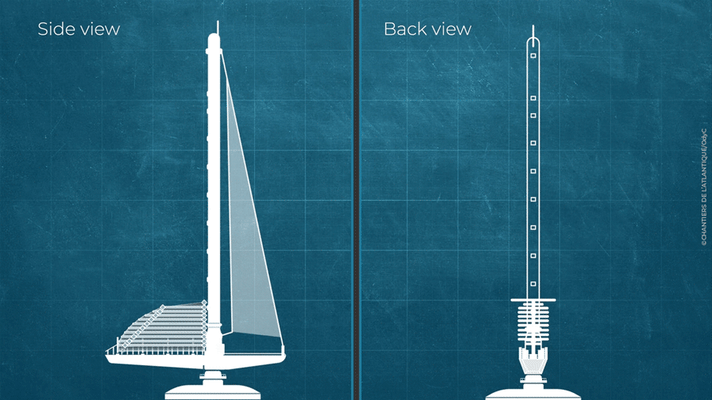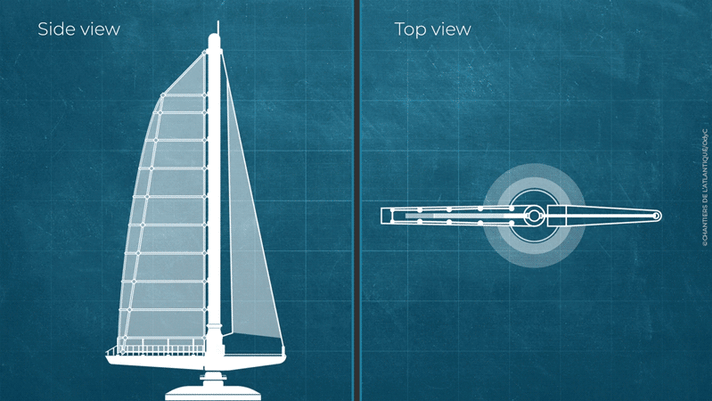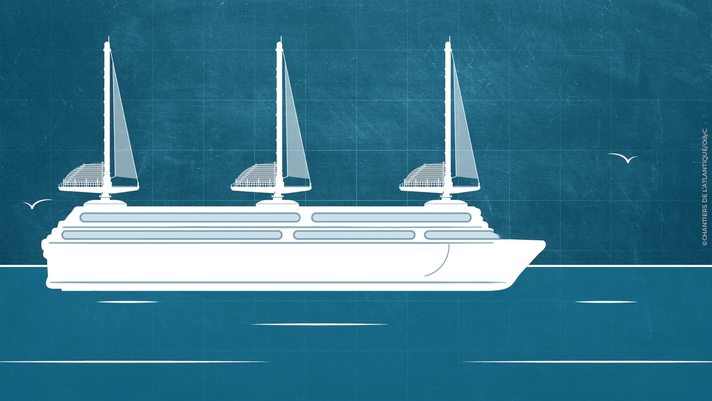



The three installed carbon masts rise an impressive 69 metres (226 feet) into the air, giving the gigantic yacht a total height of 100 metres (328 feet) above the waterline. The masts are designed to tilt and swivel, which allows the sail area to be optimally aligned with the wind and reduces the bridge clearance heights. The masts will each carry rigid sails with a huge surface area of 1,500 square metres. Under optimal wind conditions, the ship can navigate using only sails and reach speeds of up to 17 knots - even exceeding the standard engine propulsion speed.
Innovative technology
The SolidSail concept has been developed over the past ten years by Chantiers de l'Atlantique and is a new technology in the field of sail propulsion. In contrast to conventional textile sails, the SolidSail system consists of rigid panels, rectangles formed from a carbon frame and glass fibre surfaces. The panels are connected by joints.
The rigid sails are mounted on a so-called balestron rig. A balestron rig is characterised by a boom that extends in front of the mast and is pivoted on it. This design allows the masts to rotate 360 degrees and tilt up to 70 degrees, which makes it easier to pass bridges, among other things.
From around twelve knots of wind, the SolidSail system should achieve a performance comparable to conventional sails. Another advantage is its longevity: The expected service life is around 25 years, which is significantly longer than that of conventional textile sails and should significantly reduce maintenance costs.
The rig functions in detail:



The development of this system presented the engineers with considerable challenges, as there were no comparable constructions of this size. A perfect balance had to be found between stability and flexibility in order to withstand the enormous forces acting on the masts and sails. In addition, the rig must be able to be operated by the regular crew without the need for additional sailing experts. This required a high degree of automation and user-friendly control.
The development of rigid sail panels was also necessary to eliminate the tilting of sails, which can be dangerous with traditional sails of this size. With the enormous sail areas, the forces generated by flapping sails can be so strong that they pose a considerable danger.
Further innovations
The sailing system is supported by a hybrid propulsion solution that runs on liquefied natural gas (LNG) and offers a significant reduction in emissions compared to traditional marine fuels. An AI-controlled detection system will also be installed to minimise the risk of collisions with marine mammals. Dynamic positioning technology will also eliminate the need for anchoring and protect sensitive seabeds.
A new definition of luxury at sea
With just 54 suites over a length of 220 metres, the "Orient Express Corinthian" is aimed at an exclusive clientele. The size of the accommodation ranges from 45 to 230 square metres - the presidential suite is even said to offer more than 1,400 square metres.
From 2026, the Orient Express Corinthian will cruise the Mediterranean and the Caribbean. The first season will start in May 2026 in the Mediterranean and the Adriatic. The cruises will last between two and eight nights and can be combined for longer experiences. The routes of the Orient Express Corinthian are determined by the wind and promise an authentic sailing experience. The ship will call at 35 ports, including well-known luxury destinations such as Monte Carlo, Portofino and Saint-Tropez, but also smaller towns such as Portoferraio on Elba, Saint-Florent on Corsica and Lerici on the Italian Riviera.
